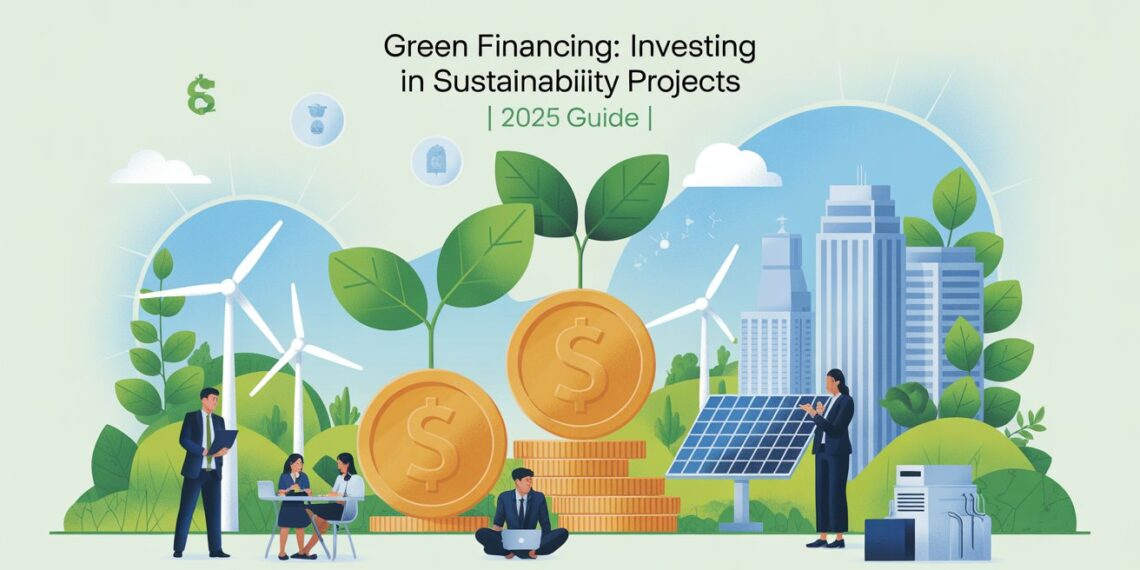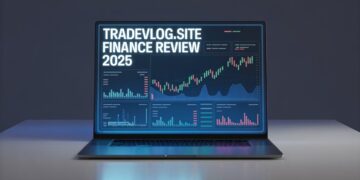As the world confronts climate change and environmental degradation, financial markets are undergoing a fundamental shift. Traditional investment approaches—once driven purely by profit—are now being redefined by purpose, sustainability, and social responsibility. This transformation is embodied in one of the most influential trends in global finance: Green Financing: Investing in Sustainability Projects.
Green financing isn’t just an ethical choice; it’s an economic imperative. Investors, corporations, and governments are increasingly recognizing that supporting sustainable projects can deliver long-term profitability while protecting natural resources. From renewable energy infrastructure to low-carbon transport systems, green finance is channeling capital toward activities that reduce environmental impact and promote inclusive growth.
This article explores how green financing works, why it matters, the instruments used, and how both institutional and individual investors can participate in this movement toward a more sustainable global economy.
What Is Green Financing?
Green financing refers to financial investments that support projects or initiatives with measurable environmental benefits. These can include renewable energy development, energy-efficient buildings, sustainable agriculture, pollution control, and water management systems.
At its core, green finance aligns the flow of capital with climate objectives and the UN Sustainable Development Goals (SDGs). It bridges the gap between environmental responsibility and economic growth—encouraging the private sector to play a key role in global sustainability transitions.
Green financing mechanisms come in many forms, including green bonds, loans, funds, and blended finance models that combine public and private capital. What they share in common is the commitment to direct funding toward projects that generate both financial returns and positive environmental outcomes.
Why Green Financing Matters
The need for sustainable finance has never been greater. Global warming, biodiversity loss, and resource depletion threaten economic stability, food security, and quality of life. According to the United Nations, an estimated $4–6 trillion annually is required to meet the SDGs by 2030, and a large share of this funding must come from private sources.
Green finance helps close this investment gap by:
-
Mobilizing capital for projects that reduce emissions or build climate resilience.
-
Mitigating risk through diversification and long-term asset stability.
-
Driving innovation in clean technologies and sustainable infrastructure.
-
Supporting policy alignment, as governments set carbon-reduction targets and create incentives for green investments.
For investors, sustainability is no longer a niche interest—it’s a key indicator of risk management and future profitability.
Key Instruments of Green Financing
1. Green Bonds
Green bonds are debt instruments issued to raise funds for environmentally friendly projects. The issuer commits to using the proceeds exclusively for initiatives such as renewable energy, pollution prevention, or ecosystem restoration.
These bonds have surged in popularity, with global issuance surpassing $500 billion annually, according to market reports. Investors benefit from stable, long-term returns, while issuers enhance their sustainability credentials.
2. Green Loans
Green loans function similarly to traditional loans but are tied to specific environmental objectives. The borrower must meet certain sustainability criteria or performance targets, often verified by third-party assessments.
For corporations, green loans provide both financing and reputational benefits by showcasing commitment to environmental responsibility.
3. Sustainability-Linked Bonds and Loans
Unlike green bonds, sustainability-linked instruments tie financial terms—such as interest rates—to the borrower’s achievement of sustainability performance metrics (e.g., reducing carbon emissions or increasing renewable energy use). Failure to meet targets can trigger higher costs, aligning financial incentives with environmental outcomes.
4. Blended Finance
Blended finance combines public or philanthropic capital with private investment to de-risk sustainable projects. For example, development banks or government agencies may provide guarantees or concessional loans to attract private sector participation in renewable energy or climate adaptation projects in emerging markets.
5. Green Equity Funds and Impact Investing
Equity-based green funds and impact investing initiatives allow individuals and institutions to invest directly in companies or startups advancing sustainability goals—such as solar manufacturers, electric vehicle firms, or sustainable agriculture ventures.
How Investors Evaluate Sustainability Projects
Investors evaluating green projects must balance environmental objectives with financial viability. Successful green financing relies on rigorous assessment, transparency, and accountability.
1. Environmental Due Diligence
Before committing capital, investors evaluate the project’s potential environmental impact. Key factors include:
-
Expected reduction in greenhouse gas emissions.
-
Compliance with environmental regulations and standards.
-
Long-term sustainability and maintenance of natural resources.
2. Financial Feasibility
A sustainable project must also make sound economic sense. Investors analyze projected cash flows, market demand, cost structures, and risk exposure—ensuring that environmental benefits complement financial stability.
3. Measuring Impact
Impact measurement is crucial to verify that a project achieves its intended outcomes. Common metrics include:
-
Tons of CO₂ emissions avoided
-
Megawatts of renewable energy generated
-
Hectares of land restored or conserved
-
Jobs created in green industries
Transparent reporting builds trust among stakeholders and prevents “greenwashing,” where companies exaggerate environmental claims without evidence.
Global Standards and Taxonomies in Green Finance
To promote consistency and credibility, international frameworks define what qualifies as “green.” These include:
1. EU Sustainable Finance Taxonomy
The European Union taxonomy classifies economic activities that substantially contribute to environmental objectives, ensuring that investments meet verifiable sustainability criteria.
2. Green Bond Principles (ICMA)
These voluntary guidelines outline transparency and disclosure standards for green bond issuers, helping investors compare and trust project claims.
3. Green Climate Fund (GCF)
Established under the UN Framework Convention on Climate Change (UNFCCC), the GCF supports developing countries in implementing low-emission, climate-resilient projects by mobilizing global financial resources.
4. National Frameworks
Countries are increasingly adopting their own sustainability finance regulations—such as China’s Green Bond Endorsed Project Catalogue and ASEAN’s Green Bond Standards—to align domestic capital markets with global goals.
Real-World Examples of Green Financing Success
Case 1: Renewable Energy in India
India’s issuance of green bonds has financed large-scale solar and wind projects, contributing to its ambitious renewable energy targets and reducing carbon intensity across the power sector.
Case 2: Sustainable Transport in Europe
Several European cities have issued green bonds to develop electric public transport networks and expand cycling infrastructure, directly reducing urban emissions.
Case 3: Climate-Resilient Agriculture in Africa
Through blended finance, development institutions and private investors have co-funded sustainable agriculture initiatives that improve soil health, conserve water, and boost farmers’ incomes.
These examples illustrate how Green Financing: Investing in Sustainability Projects can drive tangible progress in environmental and economic terms simultaneously.
Managing Risk and Avoiding Greenwashing
As demand for green assets grows, so does the risk of mislabeling or overstating sustainability claims. Investors should apply strict verification standards and work with accredited evaluators.
Key steps to avoid greenwashing include:
-
Third-party certification from recognized agencies.
-
Clear use-of-proceeds reporting and regular impact disclosures.
-
Alignment with recognized frameworks like the EU taxonomy or ICMA principles.
-
Transparent communication of project risks and limitations.
Maintaining accountability is essential not just for investor confidence but for ensuring that green finance truly delivers environmental benefits.
How to Get Started in Green Financing
Both institutional and retail investors can participate in green finance markets. Here’s how to begin:
1. Identify Your Sustainability Focus
Decide which sectors or goals matter most—such as renewable energy, sustainable housing, or water conservation. This focus guides your investment strategy and partner selection.
2. Research Available Instruments
Explore green bonds, exchange-traded funds (ETFs), or mutual funds specializing in sustainable assets. Review prospectuses to ensure transparency and measurable impact reporting.
3. Evaluate Project Credibility
Verify that the issuer adheres to international standards and provides independent audits. Review performance metrics and ensure there’s ongoing reporting.
4. Diversify Across Projects and Regions
Spread investments across different geographies and technologies to minimize risk and maximize impact.
5. Engage with Financial Advisors
Work with advisors experienced in ESG or sustainable finance. They can help navigate certification requirements, regulatory updates, and risk management.
Future Trends in Green Financing
The momentum behind green finance continues to accelerate as sustainability becomes central to global economic policy. Key trends shaping the next decade include:
-
Transition Finance: Supporting industries with high emissions to shift toward cleaner operations.
-
Carbon Markets: Expansion of voluntary and compliance carbon trading systems, linking finance to emission reduction outcomes.
-
Digital Green Bonds: Blockchain-based issuance and tracking to enhance transparency and traceability.
-
Nature-Based Solutions: Growing investment in forestry, biodiversity restoration, and natural carbon sinks.
-
Corporate Integration: More companies integrating sustainability metrics into core financial reporting.
The future of finance will be green by design—aligning profit with purpose.
FAQs About Green Financing
1. What is the main goal of green financing?
The goal is to mobilize capital for projects that generate environmental benefits while offering financial returns, helping societies transition toward a sustainable, low-carbon economy.
2. Who can invest in green finance instruments?
Both institutional investors (banks, pension funds, corporations) and individual investors can invest through green bonds, mutual funds, or ESG-focused ETFs.
3. How are green projects verified?
Independent auditors and certification agencies assess whether projects meet recognized sustainability criteria and report measurable environmental outcomes.
4. Are green investments profitable?
Yes. While some may offer modest short-term returns, many green assets are stable, long-term investments that align with future policy trends and risk mitigation.
5. What’s the difference between green finance and sustainable finance?
Green finance focuses primarily on environmental projects, while sustainable finance includes broader social and governance factors—collectively known as ESG (Environmental, Social, and Governance).
Conclusion
The global financial system is undergoing a transformation toward sustainability. Green Financing: Investing in Sustainability Projects is more than a trend—it’s the blueprint for a resilient, inclusive, and environmentally responsible economy.
By aligning capital with climate goals, investors can foster innovation, manage long-term risks, and contribute to a more stable planet. The path forward lies in transparency, accountability, and collaboration between public and private sectors.
For investors, the opportunity is clear: supporting green projects is not just about protecting the environment—it’s about shaping the future of finance itself.










